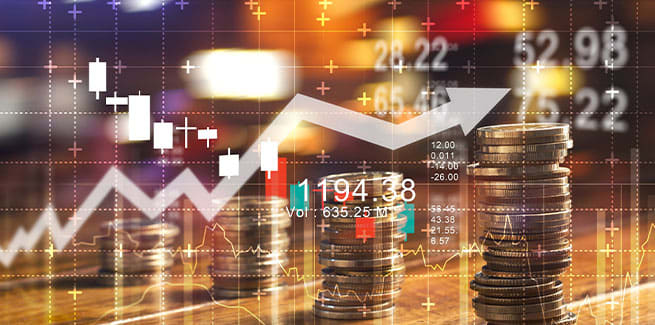Invest
What to consider when currency hedging
International equities ETFs are a popular option with Australian investors, attracting $6 billion in the last three years, but what should you consider when courting this asset class?
What to consider when currency hedging
International equities ETFs are a popular option with Australian investors, attracting $6 billion in the last three years, but what should you consider when courting this asset class?

In the past three years, international equities ETFs available on the ASX have attracted ~$6 billion from Australian investors, with net inflows into this category growing 40 per cent year-on-year since 2013. As part of continued product innovation in the Australian industry, a number of ‘currency hedged’ ETFs have been launched. Here are three things to consider about currency hedging over equities investments:
1. Total Return = Equities Return + Currency Return
Many investors may not appreciate that as they allocate more of their portfolios to international equities, especially on an unhedged basis, they are typically taking on additional asset exposure in the form of foreign currency. For an unhedged investor this means converting their Australian dollars into foreign currency and buying the foreign denominated equities. This secondary exposure can amplify returns when the foreign currency is rising relative to the Australian dollar but can also weigh on returns that would otherwise be expected when the foreign currency falls relative to the Australian dollar.
2. Currency exposure can add to the volatility of your portfolio

While it’s not always the case with every currency pair, investors taking on a secondary exposure in the form of foreign currency are generally adding risk to their international equities portfolio.
Modern portfolio theory tells us that asset weightings should be selected in order to maximise expected risk adjusted returns of the portfolio. In other words, for currency risk to be a reasonable addition to an international equities portfolio, that currency exposure would need to be negatively correlated to equity market returns or you would need to reasonably expect an added return for exposing yourself to additional risk from currency fluctuations.
This would be the case where you have a favourable opinion on the potential direction of the currencies. However, if you don’t have a particular view on where the foreign currency is moving relative to the Australian dollar, hedging may allow you to reduce your portfolio risk while maintaining the expected return from the underlying equities.
3. Australian investors often ‘get paid’ to hedge foreign currency
The practical costs of implementing the hedge have long been the key argument against the benefits of currency hedging. The main component of the cost of hedging essentially comes from the interest rate differential between the hedged foreign currency and the domestic currency. This, however, is a two-way street. Put simply, in a situation where the domestic currency has higher short-term interest rates than the overseas currency, a beneficial relationship is created and the ‘positive carry’ between the two currencies provides a return benefit for the hedged exposure. If the fund’s currency hedge results in a profit, the positive carry benefit will have the effect of increasing the amount of profit. If the fund’s currency hedge results in a loss, the positive carry benefit will have the effect of reducing the amount of loss. So where Australian interest rates are the higher of the pair, Australian investors hedging their offshore exposures will effectively get paid to hedge.
For example, currently the Australian cash rate is at 1.50 per cent p.a. While it is at historic lows, it still remains notably higher than, say, the European central bank rate which is negative. The difference between the interest rates means the currency hedged WisdomTree European equities fund, for example, is presently generating around a ~2.30 per cent p.a. carry benefit for investors (of course, the carry benefit can vary over time with changes in interest rates and may even reverse).
Conclusion
Despite recent trends, many Australian investors remain underexposed to international equities. As investors begin to take note of the opportunities and diversification benefits of investing offshore, it’s important they consider the effect currency fluctuations will have on their returns. With hedged investment now a simple and cost effective option through recent developments in the exchange traded fund market, Australian investors now have the ability to ensure their exposure appropriately reflects their view.
Investors with a positive view on the relative directions of the respective currencies can take their exposure unhedged via a number of exchange traded funds. However, investors without a specific opinion on the currencies can find themselves having made an unnecessary ‘gamble’ on an uncertain outcome by taking their exposure unhedged, and can also be giving up a positive carry benefit in the process (at least in the current interest rate environment).
In these situations (where investors have a positive view on the underlying market but are unsure on the currencies), they can now easily get a ‘pure’ exposure to the underlying equities without the attached currency risk through a currency hedged exchange traded fund.
Adam O’Connor, distribution manager, BetaShares

Mutual funds
Mutuals profits rise amid sector challenges: KPMG report highlights growth and merger trends
Australia's mutual banks, building societies, and credit unions, collectively known as Mutuals, have reported a significant rise in profits for the 2025 financial year, according to KPMG's 38th Mutual ...Read more

Mutual funds
EIF and NATO Innovation Fund partner to boost European defence and security investment
The European Investment Fund (EIF) and NATO Innovation Fund (NIF) have signed a Memorandum of Understanding to collaborate on expanding funding for start-ups, SMEs and midcaps in Europe's defence, ...Read more

Mutual funds
Fund managers brace for regulatory challenges as outsourcing and innovation take centre stage
As regulatory complexities continue to mount, fund managers are increasingly turning to outsourcing and prioritising innovation to navigate the challenging landscape, according to a new study by Carne ...Read more

Mutual funds
New report highlights rising anti-money laundering risks and need for three lines of defence
A new report published by Ocorian and Newgate Compliance has warned that rising anti-money laundering (AML) risks are increasing the pressure for alternative fund managers to have three lines of ...Read more

Mutual funds
Centuria capitalises on non-core diversities with a new $50 million fund
The Centuria Capital Group, an established Australasian real estate fund manager, has successfully raised $50 million in equity from its network of Australian wholesale investors. Read more

Mutual funds
New study shows fund managers are eyeing overseas markets for capital growth
A recent study conducted by Carne Group, a prominent figure in the fund regulation and governance solutions sector for the asset management industry, has highlighted a significant shift in the ...Read more

Mutual funds
Equity Trustees reports robust performance with significant revenue and profit growth
Equity Trustees has witnessed a noteworthy advancement in its financial standing, marked by substantial increases in revenue and funds under management, administration, and supervision (FUMAS), ...Read more

Mutual funds
Micro-investing: Is it worth it?
Investing can be complex. It involves making financial decisions on how your money is going to be invested and managed over time, as well as figuring out the right strategy for each investment. There ...Read more

Mutual funds
Mutuals profits rise amid sector challenges: KPMG report highlights growth and merger trends
Australia's mutual banks, building societies, and credit unions, collectively known as Mutuals, have reported a significant rise in profits for the 2025 financial year, according to KPMG's 38th Mutual ...Read more

Mutual funds
EIF and NATO Innovation Fund partner to boost European defence and security investment
The European Investment Fund (EIF) and NATO Innovation Fund (NIF) have signed a Memorandum of Understanding to collaborate on expanding funding for start-ups, SMEs and midcaps in Europe's defence, ...Read more

Mutual funds
Fund managers brace for regulatory challenges as outsourcing and innovation take centre stage
As regulatory complexities continue to mount, fund managers are increasingly turning to outsourcing and prioritising innovation to navigate the challenging landscape, according to a new study by Carne ...Read more

Mutual funds
New report highlights rising anti-money laundering risks and need for three lines of defence
A new report published by Ocorian and Newgate Compliance has warned that rising anti-money laundering (AML) risks are increasing the pressure for alternative fund managers to have three lines of ...Read more

Mutual funds
Centuria capitalises on non-core diversities with a new $50 million fund
The Centuria Capital Group, an established Australasian real estate fund manager, has successfully raised $50 million in equity from its network of Australian wholesale investors. Read more

Mutual funds
New study shows fund managers are eyeing overseas markets for capital growth
A recent study conducted by Carne Group, a prominent figure in the fund regulation and governance solutions sector for the asset management industry, has highlighted a significant shift in the ...Read more

Mutual funds
Equity Trustees reports robust performance with significant revenue and profit growth
Equity Trustees has witnessed a noteworthy advancement in its financial standing, marked by substantial increases in revenue and funds under management, administration, and supervision (FUMAS), ...Read more

Mutual funds
Micro-investing: Is it worth it?
Investing can be complex. It involves making financial decisions on how your money is going to be invested and managed over time, as well as figuring out the right strategy for each investment. There ...Read more








